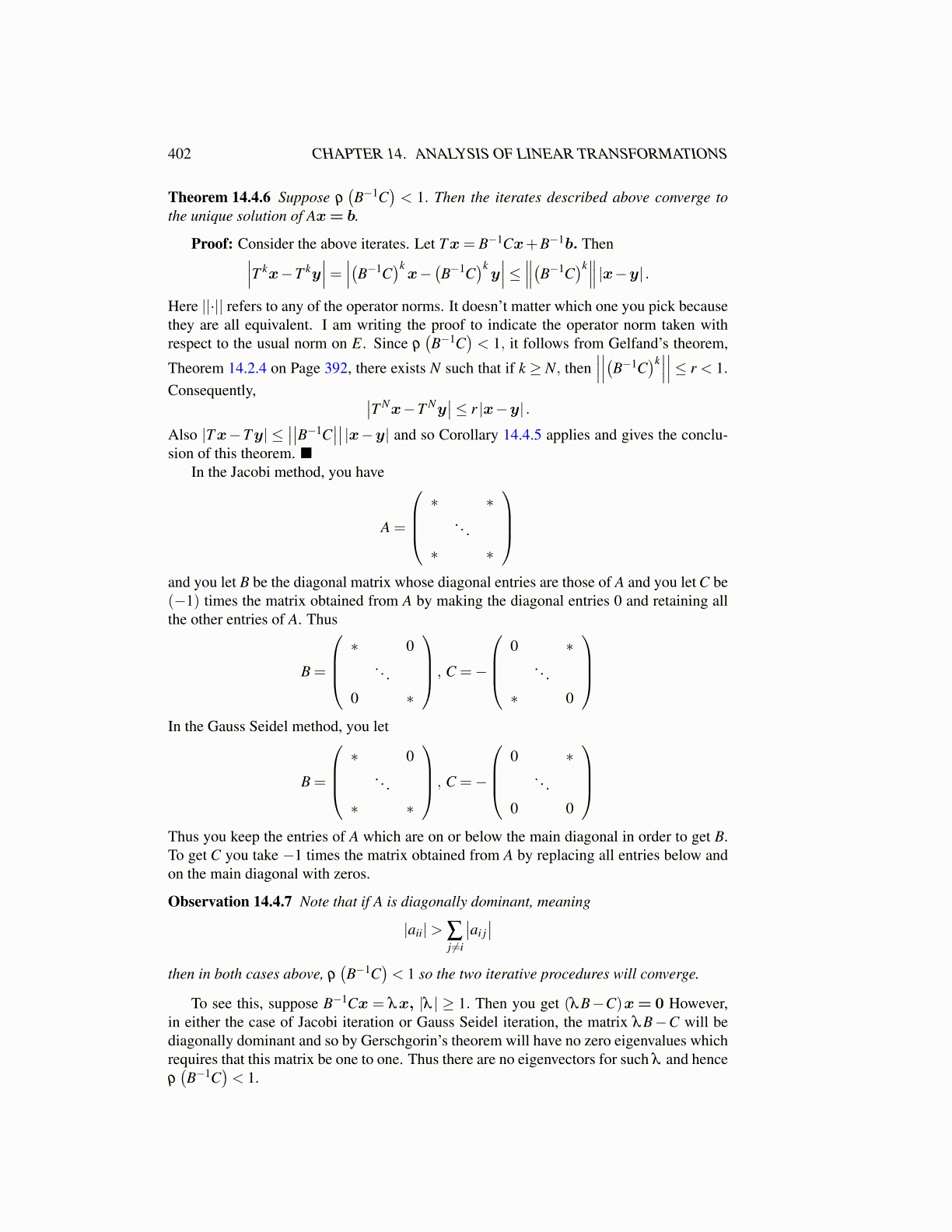
402 CHAPTER 14. ANALYSIS OF LINEAR TRANSFORMATIONS
Theorem 14.4.6 Suppose ρ(B−1C
)< 1. Then the iterates described above converge to
the unique solution of Ax= b.
Proof: Consider the above iterates. Let Tx= B−1Cx+B−1b. Then∣∣∣T kx−T ky∣∣∣= ∣∣∣(B−1C
)kx−
(B−1C
)ky∣∣∣≤ ∥∥∥(B−1C
)k∥∥∥ |x−y| .
Here ||·|| refers to any of the operator norms. It doesn’t matter which one you pick becausethey are all equivalent. I am writing the proof to indicate the operator norm taken withrespect to the usual norm on E. Since ρ
(B−1C
)< 1, it follows from Gelfand’s theorem,
Theorem 14.2.4 on Page 392, there exists N such that if k ≥ N, then∣∣∣∣∣∣(B−1C
)k∣∣∣∣∣∣≤ r < 1.
Consequently, ∣∣T Nx−T Ny∣∣≤ r |x−y| .
Also |Tx−Ty| ≤∣∣∣∣B−1C
∣∣∣∣ |x−y| and so Corollary 14.4.5 applies and gives the conclu-sion of this theorem. ■
In the Jacobi method, you have
A =
∗ ∗
. . .
∗ ∗
and you let B be the diagonal matrix whose diagonal entries are those of A and you let C be(−1) times the matrix obtained from A by making the diagonal entries 0 and retaining allthe other entries of A. Thus
B =
∗ 0
. . .
0 ∗
, C =−
0 ∗
. . .
∗ 0
In the Gauss Seidel method, you let
B =
∗ 0
. . .
∗ ∗
, C =−
0 ∗
. . .
0 0
Thus you keep the entries of A which are on or below the main diagonal in order to get B.To get C you take −1 times the matrix obtained from A by replacing all entries below andon the main diagonal with zeros.
Observation 14.4.7 Note that if A is diagonally dominant, meaning
|aii|> ∑j ̸=i
∣∣ai j∣∣
then in both cases above, ρ(B−1C
)< 1 so the two iterative procedures will converge.
To see this, suppose B−1Cx = λx, |λ | ≥ 1. Then you get (λB−C)x= 0 However,in either the case of Jacobi iteration or Gauss Seidel iteration, the matrix λB−C will bediagonally dominant and so by Gerschgorin’s theorem will have no zero eigenvalues whichrequires that this matrix be one to one. Thus there are no eigenvectors for such λ and henceρ(B−1C
)< 1.